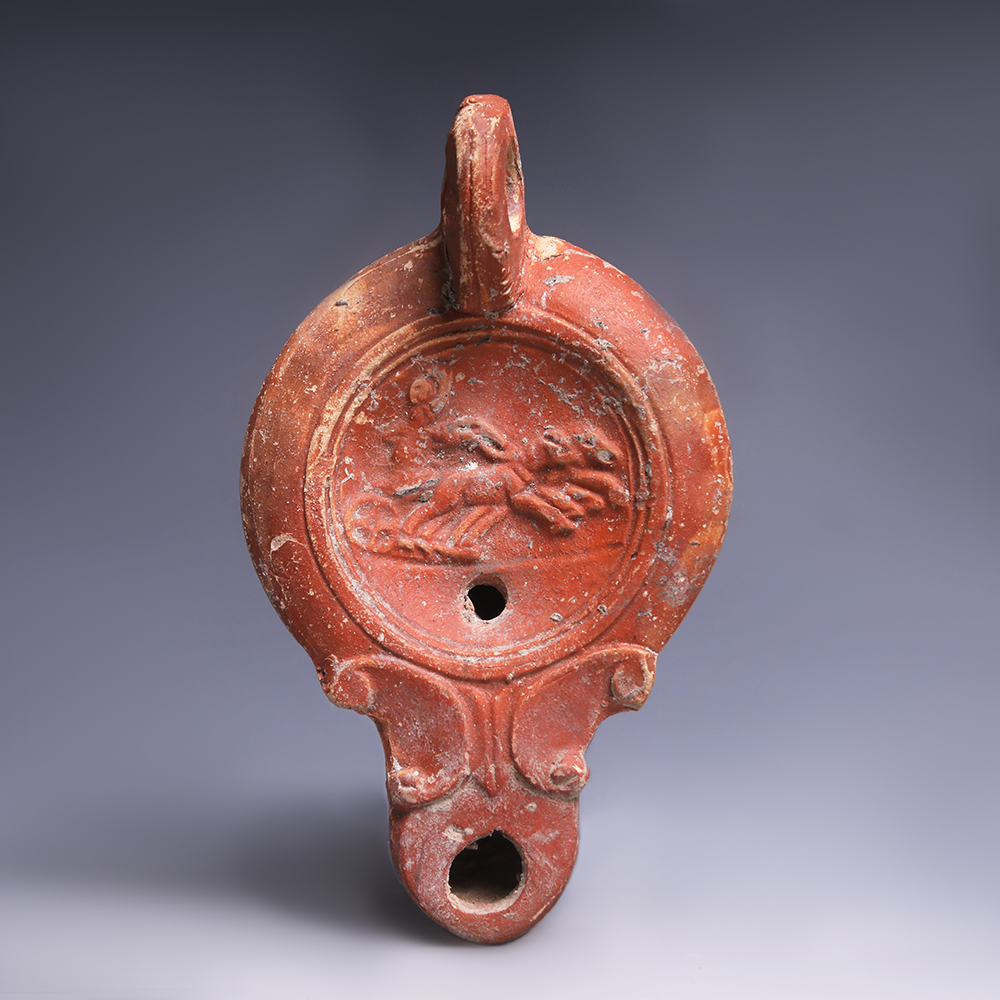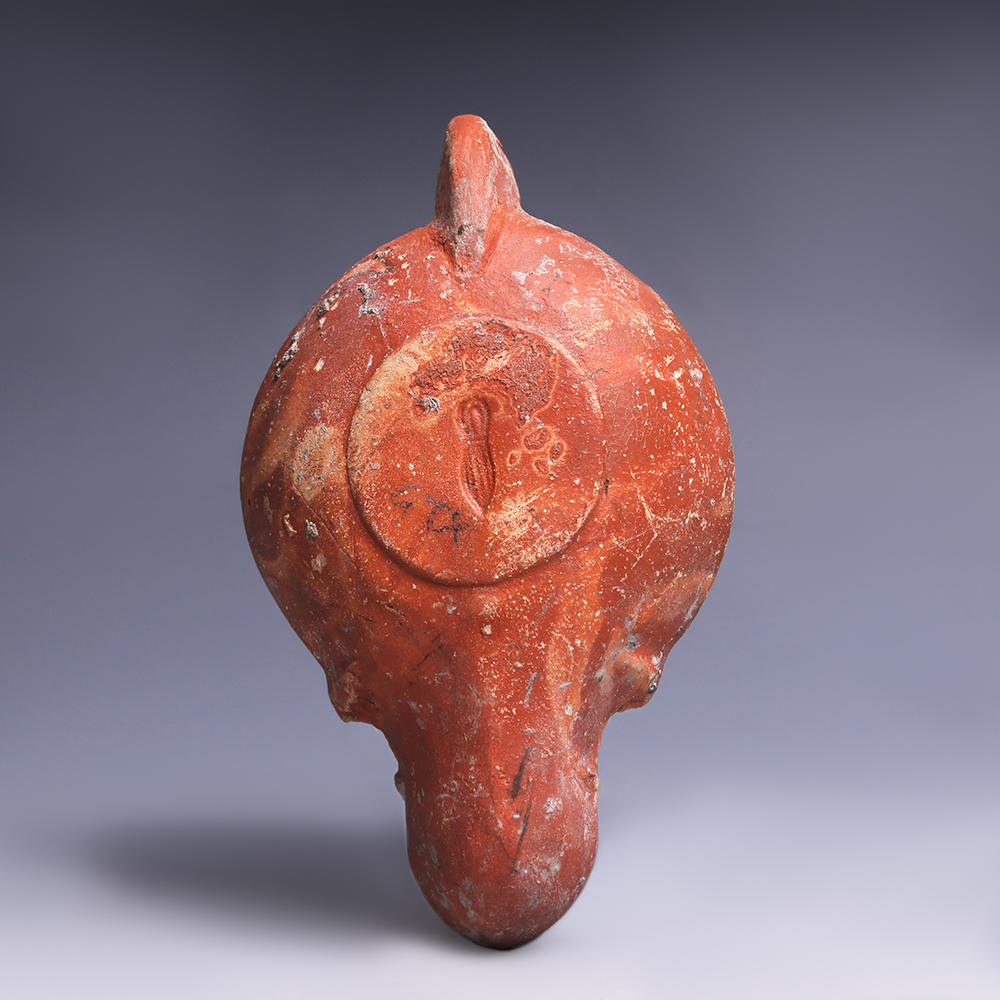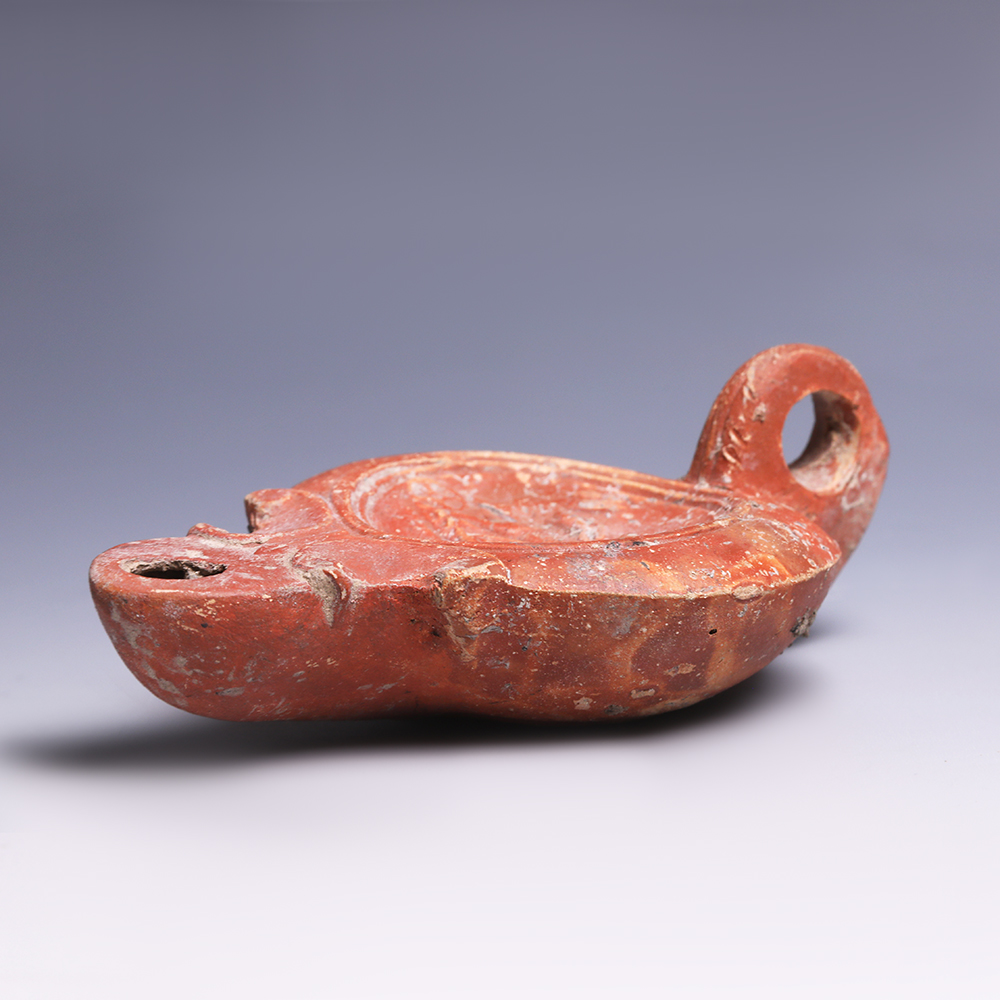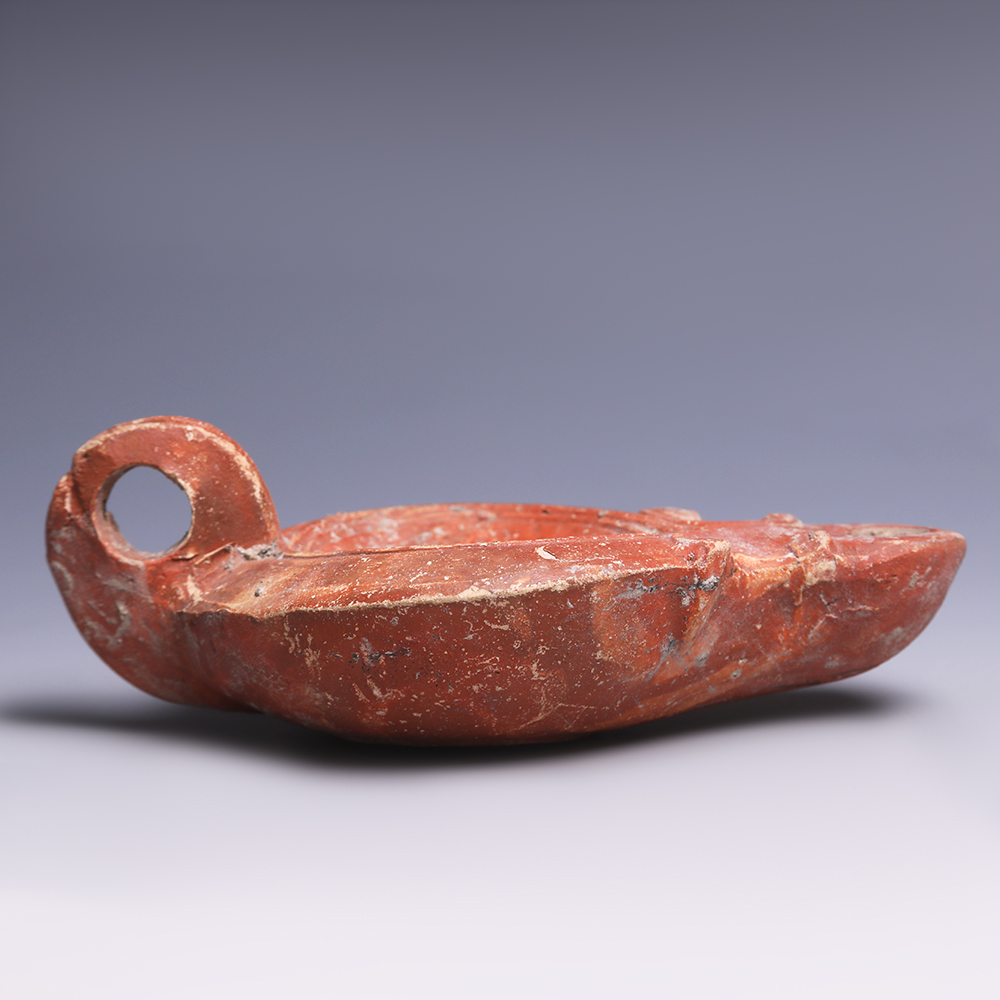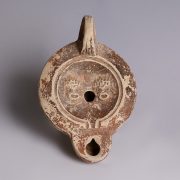The Roman oil lamp, a product almost unparalleled in its distribution throughout the empire, developed towards the end of the Hellenistic period and was to keep its general shape longer than any other item of pottery throughout the Mediterranean. The vast trade networks set up with the expansion of the Roman empire allowed for this item to be spread across Europe, Eastern Asia and Northern Africa. Oil lamps were used by the Romans for mainly three reasons; to light private and public spaces, to give as offerings in temples to the gods and to be placed within a grave or funerary context. As well as linear, geometric and circular designs, favourite subjects for decoration of oil lamps included gods and mythological scenes, scenes from everyday life, gladiatorial depictions, drawings relating to entertainment and theatre, and various animals including fish, birds and horses.
Chariot racing was an immensely popular sport across the Roman Empire. Chariots were pulled by either two horses, as depicted here, known as a ‘biga’ or were pulled by four horses, known as a ‘quadriga’. Chariot teams wore different colours, of bue, green, red or white. Mosaic depict famous clashes between two teams, the chariots, horses and their occupants splayed out spectacularly. Scenes on oil lamps depict both two and four horse-drawn carriages, although with the confines of space, two was the easier depiction.
